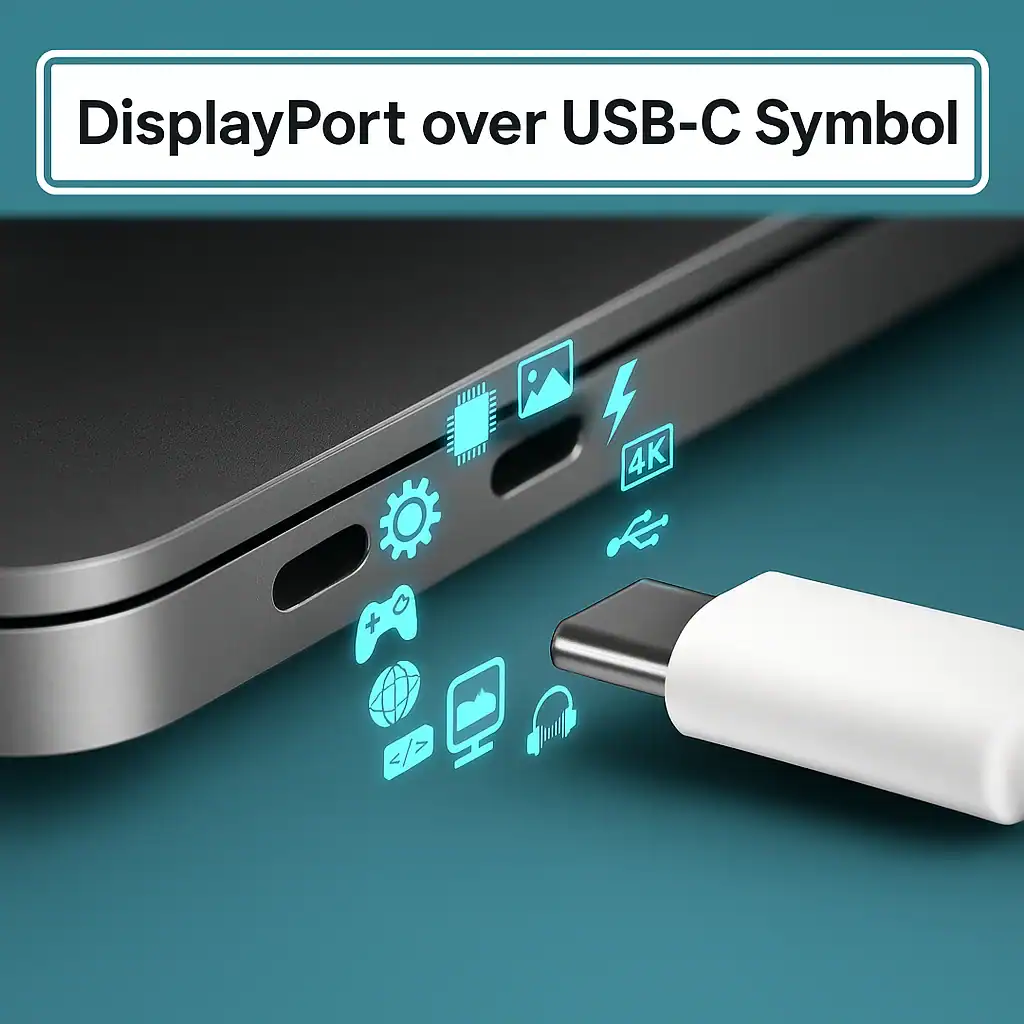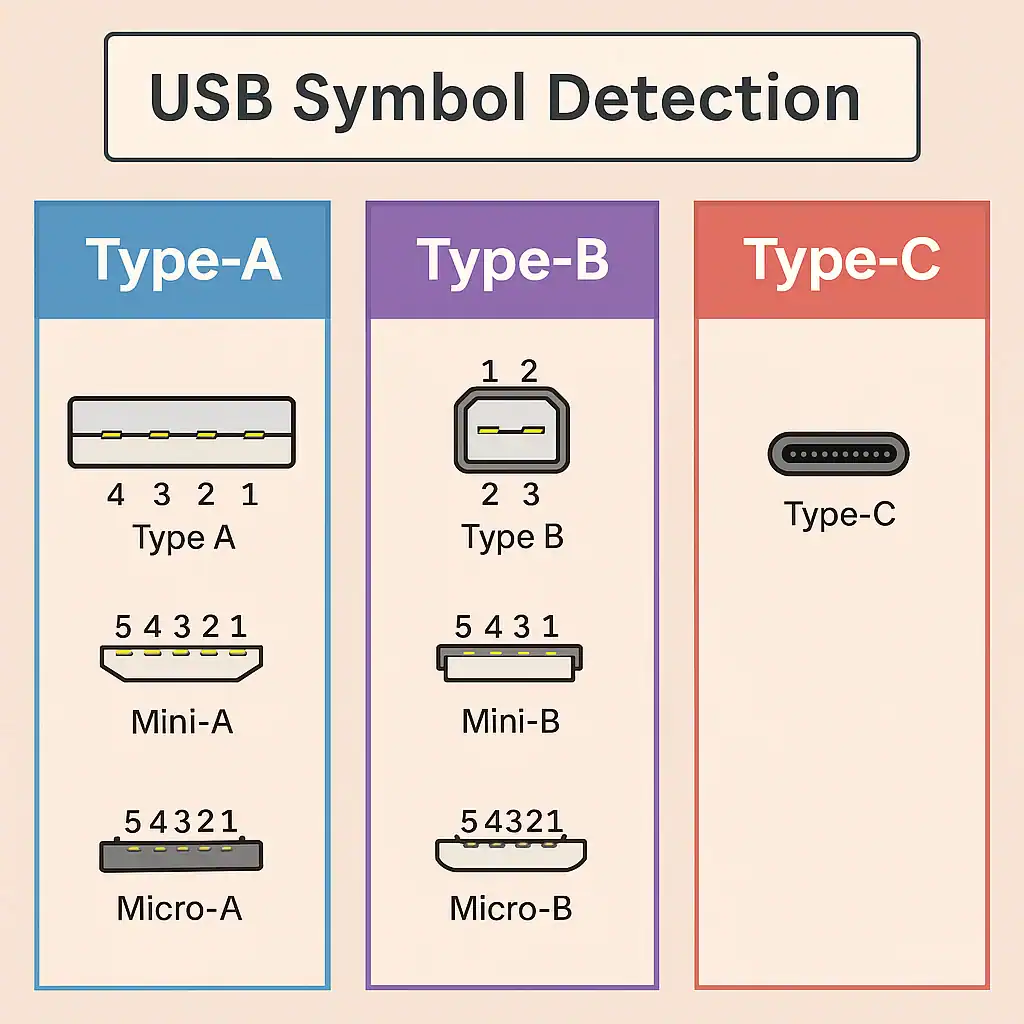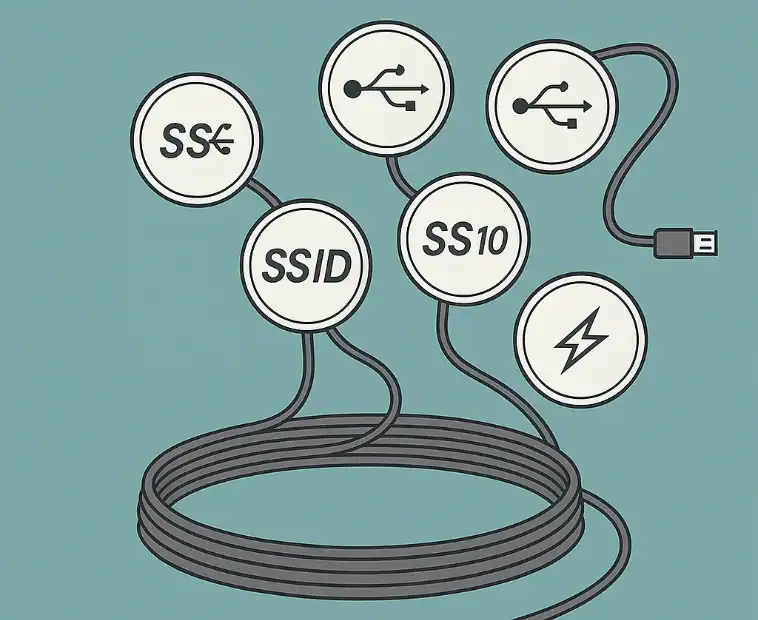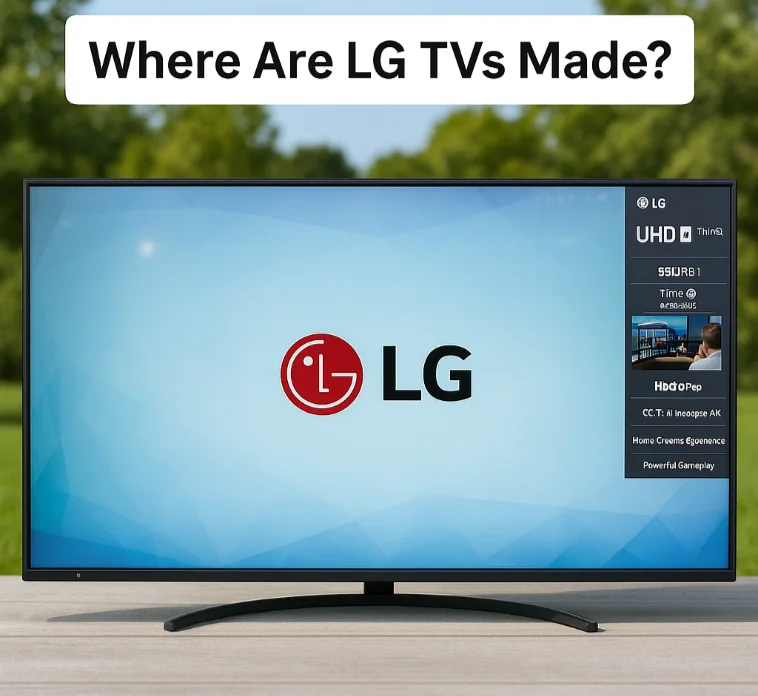The Universal Serial Bus (USB) changed the way we connect devices to our computers. USB, introduced in the late 1990s along with support for Legacy I/O Device Emulation in BIOS, has become the usual way to connect anything from thumb drives to external monitors.
But USB symbols can be difficult to understand. There are different USB types, each supporting different speed and power combinations. You know the performance to expect with each symbol of USB ports.
This post tells in great detail all USB Symbol Meanings. Official logos from the USB Implementers Forum (USB-IF) and common manufacturer variations are covered comprehensively.
Why USB Port Symbols Matter
USB symbols help you identify:
- Maximum transfer speeds
- Power delivery capabilities
- Compatible device types
- Connection standards
This will save you a lot of time and avoid compatibility problems. If you have specific needs, it is an easy way to find the best port for these needs.
The Classic Trident Logo
At the same time, the iconic USB trident symbol was introduced on USB 2.0. This three-pronged fork design has become synonymous with USB connections worldwide.
The standard trident indicates USB 2.0 with:
- Maximum speed: 480 Mbps
- Power Delivery: 2.5 watts maximum
- Compatibility: All USB devices
USB 2.0, which many newer devices have since outgrown. The simple Trident logo is rarely seen on modern laptops or motherboards. Which is great and all, but even the budget Samsung Chromebook 4 has those newfangled faster USB standards nowadays.
Where You Still Find USB 2.0
USB 2.0 ports are still available on some gaming motherboards. Usually not by symbols, but by text labels. The ports have specific applications, such as for hooking up keyboards or mice when high speeds are not needed.
USB 5 Gbps Symbol (USB 3.0)

Evolution of USB 3.0 Branding
When it was released in November 2008, USB 3.0 changed the game by providing a huge performance increase. On paper, the protocol offered speeds of up to 5 Gbps theoretical maximum. However, the marketing of USB 3.0 became all convoluted over time:
- Original name: USB 3.0
- 2013 rebrand: USB 3.1 Gen 1
- 2017 rebrand: USB 3.2 Gen 1
- Current name: USB 5 Gbps
Current USB 5 Gbps Symbol
Here is the symbol for USB 5 Gbps used in modern times:
- Stylized USB cable graphic
- “5 Gbps” text displayed
- Clean, minimalist design
This move erased the previous trident-based versions with “SS” (SuperSpeed) branding and a “5” designator.
Alternative Markings
Manufacturers sometimes use different indicators:
- Blue USB-A vs USB-C ports (blue, as seen on many devices)
- Legacy SuperSpeed logos
- Text-only labeling
Some ports on the Lenovo Legion 7i Gen 9 laptop still have the old USB 3.0 SuperSpeed logo.
USB 10 Gbps Symbol (USB 3.1 Gen 2)

Understanding USB 10 Gbps
Theoretical bandwidth is 2x that of USB 5 Gbps. Ensure that your system supports transfer rates up to 1,250 MB/s.
With the best external SSDs, you get 700-1,000 MB/s (real world). In addition, the blazing-fast 10 Gbps USB is perfect for professional workflows and large file transfers.
Official USB 10 Gbps Symbol
The current symbol design looks exactly like the USB 5 Gbps logo. Just the speed indication changes to ’10 Gbps.’
The uniformity helps spot USB specification support quickly.
Manufacturer Variations
Different brands use various indicators:
- A lot of gaming motherboards have red USB ports
- Legacy Trident badges with “10” designation
- Color-coded port designs
Some ASRock motherboards use the Trident symbol for both 5 and 10 Gbps ports.
USB 20 Gbps Symbol (USB 3.2 Gen 2×2)

USB-C Only Protocol
USB 20 Gbps is USB-C only. Unfortunately, the protocol is not backward compatible with older USB-A connector ports due to physical limitations.
It is limited by this requirement to ensure top performance, but at the same time, that lack of compatibility also precludes older devices.
Current Symbol Design
Here is what the USB 20 Gbps symbol looks like:
- Curved USB cable graphic
- “20 Gbps” speed indicator
- Official USB-IF certification mark
Limited Adoption
Also, let us not forget that half of the laptops do without USB 20 Gbps completely. They would rather combine 10 Gbps ports with 40 Gbps capabilities side by side.
USB 20 Gbps is not listed by Apple at all. The Asus ROG Zephyrus G14 is an example of this that only features choices equating to 10 or 40 Gbps.
USB 40 Gbps Symbol (USB4)

The Next Generation Standard
What USB4 promises: USB4 was announced in September 2019, and it brought some big improvements over previous generations. This protocol offers up to 40 Gbps of throughput, or 5,000 MB/s.
That speed means total compatibility with the top portable SSDs around right now.
Logo Evolution
Each generation of USB4 symbol changes:
- Original: New Trident with half-circle “40”
- 2021 Update: Modern cable graphic pattern
- 2022: Dropped “SuperSpeed” branding
Certification Challenges
So far in 2025, there are fewer than 2,000 products with proper USB-IF certification. The downside to this is that not all USB 40 Gbps ports are accurately labeled as performing at that rate.
Asus also takes the distinction of delivering a polished product with solid materials — you’ll notice official logos on devices like the Zenbook A14. Certification, which most manufacturers appear to skip due to the cost.
USB 80 Gbps Symbol (USB4 Version 2.0)

Cutting-Edge Performance
USB4 Version 2.0: USB 80 Gbps (2022). The protocol is capable of speeds of 10,000 MB/s in theory.
The naming convention here follows the saga established with previous iterations. No more confusing generation numbers – users see clear speed indicators.
Symbol Consistency
USB 80 Gbps has a familiar visual design similar to other USB symbols we have seen:
- Stylized cable graphic
- “80 Gbps” speed text
- Clean, professional appearance
Current Availability
In 2025, USB 80 Gbps is still very rare. Barely 5% of the laptops Asus has released have this feature. Neither is marked on the side of the port. The Razer Blade 18 comes equipped with a USB4 Version 2.0 compliant Thunderbolt 5 port.
Thunderbolt Symbols

Understanding Thunderbolt vs USB
More recent Thunderbolt models do not use the standard USB protocol and instead feature USB-C connectors. For example, Thunderbolt 5 can match USB 80 Gbps speeds with true cross-compatibility.
Official Thunderbolt Symbol
The Thunderbolt logo features:
- Lightning bolt design
- Arrowhead at the bottom
- Clear identification mark
Manufacturer Implementation
Symbol usage varies significantly:
- Razer and Dell: Often logo-less
- Asus: Consistently uses official symbols
- Acer: Thunderbolt 4 is explicitly labeled on the Swift Go 14
Lightning Bolt Variations
Lightning bolts are also utilized by manufacturers for other things:
- The Asus USB Charger+ feature is frequently found on older laptops
- General USB charging capability
- Power delivery indicators
These use the same design, which doesn’t include the well-worn Thunderbolt arrowhead.
USB Power Delivery Symbols

USB PD Capabilities
USB Power Delivery (USB PD) provides accelerated power delivery across USB ports. The standard supports:
- USB PD 2.0: Up to 100W
- USB PD 3.1: Up to 240W
- USB PD 3.2: Programmable Voltage Sources
Official PD Symbol Design
The USB PD symbol shows:
- Stylized battery outline
- USB protocol logo inside
- Negative space design
Symbol Evolution
And the symbols for USB PD were similarly switched up, alongside those of the USB protocol:
- Pre-2021: Trident variations inside battery
- Current: Speed-based logos (5 Gbps, 10 Gbps, etc.)
Real-World Usage
Official PD power symbols are rarely used by major laptop manufacturers:
- Microsoft Surface Laptop: No PD label
- HP Spectre x360 14: Text-only specs
But as it stands right now, you can’t depend on their use of the port symbols to know what kind of PD capabilities a device has — only check the device specs.
DisplayPort over USB-C Symbol

DisplayPort Alt Mode Explained
Video output: DisplayPort Alternate Mode for video over USB-C. The technology supports:
- Up to 8K resolution at 60 Hz
- USB 3.1 data transfer speeds
- 100W power delivery
- Single cable solution
Symbol Recognition
Using the standard port announcement DisplayPort icon next to USB Type-C, DisplayPort over USB-C has its visibility, establishing an additional system of identification.
Current Relevance
It is mostly on older laptops like the HP ProBook 430 G8 from 2020 that are grandfathered into DisplayPort Alt Mode. These days, most modern devices are starting to use Thunderbolt or USB4 when it comes to display connections.
The Asus Zenbook 14 OLED has Thunderbolt ports for external displays, not DisplayPort Alt Mode.
Know Your USB Port Type
Visual Inspection Methods
Look for these identifying features:
- Official USB-IF symbols and text
- Color-coded ports (blue, red, etc.)
- Lightning bolt indicators
- Speed specifications
Physical Connector Shapes
Different types of USB use different shape connectors:
- USB-A: Rectangular, flat design
- USB-C: Oval, reversible connector
- Mini USB: Small, trapezoid shape
- Micro USB: Thin, wide rectangle
Port Location Clues
Commonly, you can find similar ports grouped up like this by the device manufacturer:
- High-speed ports: Usually marked clearly
- Charging ports: Usually accompanied by power symbols
- Older ports: Modern emblems may be missing
Common USB Symbol Misconceptions
Speed vs Connector Type
The form of the connector is being confused with the speed at which data can be transmitted by many. These ports are available in a wide range of power levels, from 5 Gbps to roughly 80 Gbps.
Color Coding Standards
Port colors aren’t universally standardized:
- Blue: Will almost always be USB 3.0/5 Gbps
- Red: USB 3.1/10 Gbps
- Black: Typically means USB 2.0
- White: Varies by manufacturer
Symbol Accuracy
Symbols are not accurate for all devices. Some manufacturers:
- Skip official certification
- Use outdated logos
- Provide no markings at all
Practical USB Symbol Applications
Choosing the Right Port
Consider the needs of your device when choosing port capabilities:
- External SSDs: Highest speed available
- USB 3.0+ port: Thumb drives
- Keyboards/mice: USB 2.0 sufficient
- Monitors: If possible, go for DisplayPort or Thunderbolt
Cable Compatibility
Make sure your cable supports the port’s full abilities:
- Both ports are choke points by using USB 2.0 cables to slow data
- Just like smartphones, USB-C cables have speed ratings
- An always-on, powered Thunderbolt cable is more expensive but provides the full Thunderbolt experience
Power Delivery Considerations
Check power requirements before connecting:
- Laptops: Need 45W+ for charging
- Smartphones: Typically use 15-25W
- Tablets: Often require 30W+
Future of USB Symbols

Standardization Efforts
So, for now, we keep looking with the USB-IF to lead the way for more easily recognizable symbols. Recent changes show movement toward:
- Simplified speed indicators
- Consistent visual design
- Reduced confusion
Emerging Technologies
New circumstances might imply other symbols:
- Higher speed protocols
- Enhanced power delivery
- Improved compatibility standards
Industry Adoption
Wider adoption depends on:
- Certification costs
- Consumer awareness
- Manufacturing incentives
Troubleshooting USB Symbol Issues
When Symbols Don’t Match Performance
If symbols do not match the port performance:
- Check cable compatibility
- Verify device specifications
- Test with known-good equipment
- Update device drivers
Missing Symbols
Most devices have no proper USB symbols. Alternative identification methods include:
- Checking device manuals
- Reading port specifications online
- Testing transfer speeds directly
- Using USB device information tools
Conflicting Information
When symbols contradict specifications:
- Trust official documentation
- Test actual performance
- Contact manufacturer support
- Verify USB-IF certification
USB Symbol Detection: Best Practices

Before Purchasing Devices
Research USB capabilities thoroughly:
- Check official specifications
- Read professional reviews
- Verify symbol accuracy
- Consider future needs
Daily Usage Tips
Maximize USB performance by:
- Using appropriate cables
- Connecting to the fastest available ports
- Avoiding USB hubs when possible
- Keeping drivers updated
Cable Management
Organize cables by capability:
- Label high-speed cables
- Keep certified cables separate
- Replace damaged cables promptly
- Invest in quality connectors
Frequently Asked Questions
What is the USB Trident symbol?
How to know if a USB port is 3.0?
Is USB-A the same as USB-C?
Why doesn't every USB port have symbols?
Is it safe to rely on USB port colors?
What does the lightning bolt icon on USB ports mean?
How to tell if a USB-C port is safe for charging?
Are newer USB symbols better than the outdated ones?
USB symbols are not matched to performance – then what?
Will the USB logos become more standardized in the future?
Conclusion
This knowledge of USB icons will guide you to decide better how a device should be connected. Official symbols largely help for sure, but what complicates it even more is manufacturers’ different interpretations and some labels that are missing completely.
You can use both symbol recognition and specification research to take advantage of USB in a reliable way. If the symbols are missing or unclear, always consult official documentation to confirm the capabilities of the devices.
USB technology is a continually evolving standard, and being aware of symbol meanings helps us keep our devices performing at their best. Between plugging in drives, charging up laptops, and more, knowing your way around USB will save you time and help you avoid any compatibility problems.
Note: While icons can guide the user quickly, the most reliable information to go on is obtained from actual device specifications. Do not neglect to have a look at specifications or even try plugging something in to verify speeds from USB ports if you are in doubt.


















